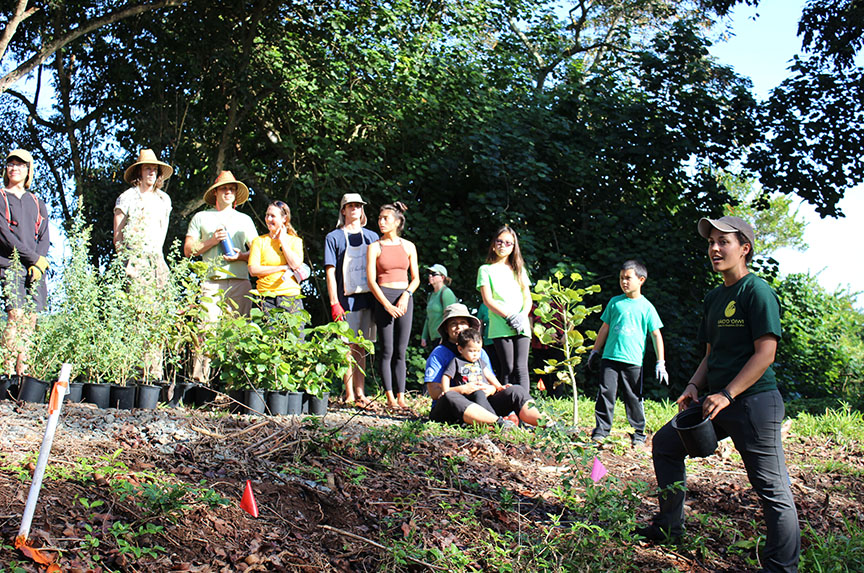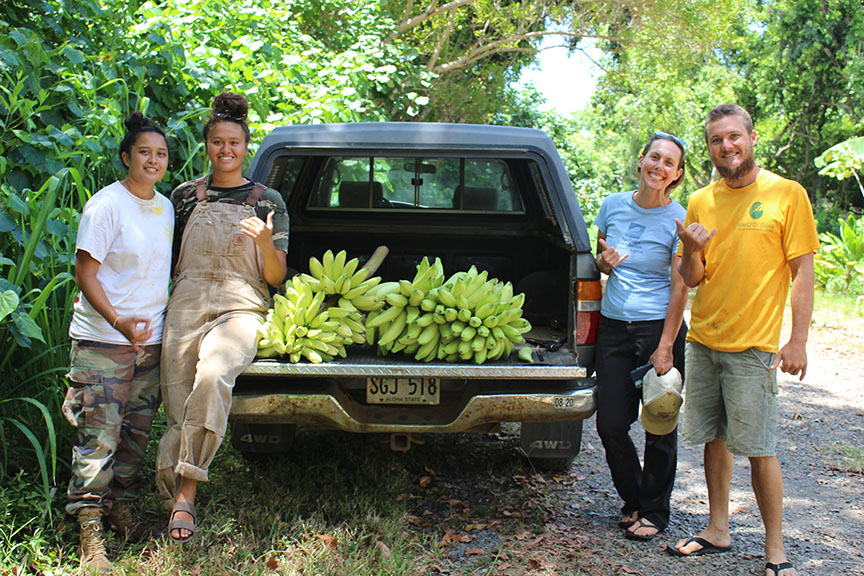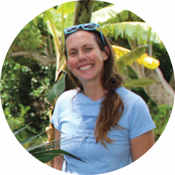

SPONSOR:
University of Hawaiʻi Seagrant Program
PROJECT PERIOD:
2020–2022
PROJECT PI:
Leah Bremer, CO-PIs: Tamara Ticktin, Clay Trauernicht, and Kawika Winter
COLLABORATORS:
Kanekoa Kukea-Shultz (and Kākoʻo ʻŌiwi), Natalie Kurashima (Kamehameha Schools), Zoe Hastings (Botany PhD student), Gina McGuire (Geography PhD student), Matt Kahoʻohanohano (Botany PhD student), Maile Wong (undergraduate), Puanani De La Cruz (undergraduate), and Jade Delevaux (The Natural Capital Project)
ABSTRACT:
Agroforestry systems have the capacity to support resilient coastal communities by providing food, conserving native biodiversity, supporting multiple ecosystem services, and representing growing priorities for conservation initiatives worldwide. In this project, we collaborate with Kākoʻo ʻŌiwi and the Heʻeia National Estuarine Research Reserve (NERR) to better understand the ecological, economic, and cultural outcomes of coastal agroforestry restoration through time, and combine this experience with interviews and environmental, social, and economic data sets to develop scenarios of agroforest restoration options relevant across the state. Based on this, we identify hot spot priority areas that can enhance biodiversity and ecosystem services of high interest to agencies, funders, and communities across the state including local food production, non-timber forest products for market and subsistence use, carbon sequestration, and/or supporting resilient coral reef ecosystems through reducing sediment export. Collectively, this research aims to improve the evidence base of agroforestry and help to match potential incentive programs with agroforest ecosystem service hotspots that provide multiple benefits and support resilient communities. We will also use our collective experience to organize a workshop for students and post-docs focused on participatory, community-based research, or co-production of knowledge through the lens of enhancing community resilience through agroforestry restoration.
Project Publications:
Hastings, Z., T. Ticktin, M. Botelho, N. Reppun, K. Kukea-Shultz, M. Wong, A. Melone, A., and L.L. Bremer. 2020. Integrating co-production and functional traits approaches for inclusive and scalable restoration solutions. Cons. Sci. and Prac. 2(9). https://doi.org/10.1111/csp2.250
Hastings, Z., M. Botelho, and L.L. Bremer. 2019. Biocultural Restoration Workday Draws Community Together to Plant an Agroforest. UHERO Blog.
PRINCIPAL INVESTIGATOR
